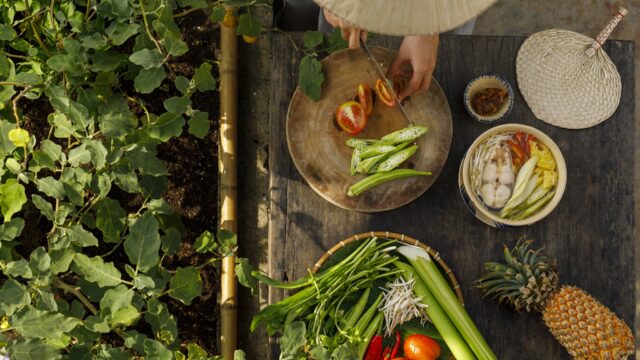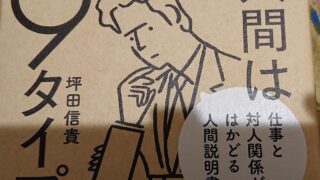週末料理と家庭菜園ときゅうりとねぎと Weekend cooking, home garden, cucumbers and green onions
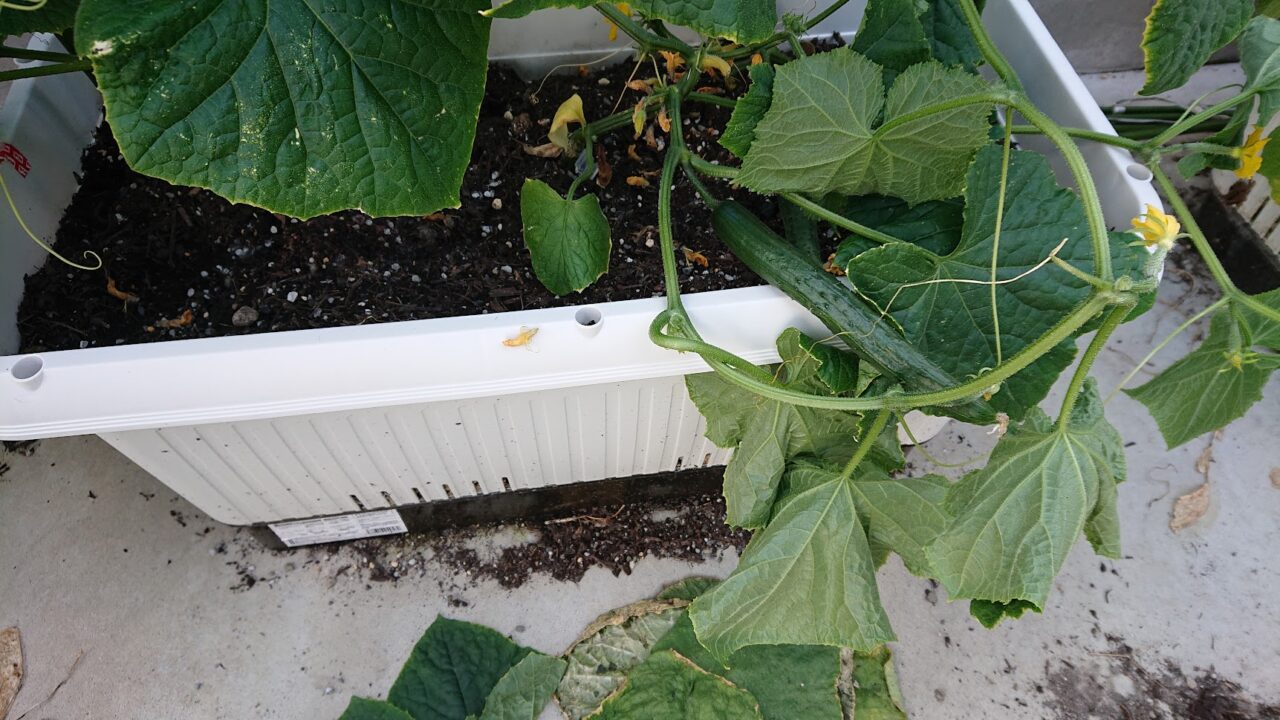
家庭菜園で育てているきゅうりとねぎが
いい感じに育ったので
収穫して料理します。
The cucumbers and green onions I’m growing in my home garden have grown nicely, so I’m going to harvest them and cook them.
自給自足っぽくてなんかかっこいいです。
It’s kind of cool to be self-sufficient.
目次
きゅうりが順調 Cucumbers are doing well
他の野菜もよく育っていますが、
特にきゅうりが順調に育っています。
Other vegetables are growing well, especially cucumbers.
数本収穫しても
数日で収穫できるものがたくさんなっています。
Even if you harvest a few plants, you can harvest a lot in just a few days.
1つの苗で100本くらいとれるらしいですが、
このペースで行くと毎日きゅうりが食べられそうです。
Apparently one seedling can produce about 100 plants.
If I keep going at this pace, I’ll probably be able to eat cucumbers every day.
すごい経済的で、しかもうまい。
It’s very economical and delicious.
最高です。
it’s the best.
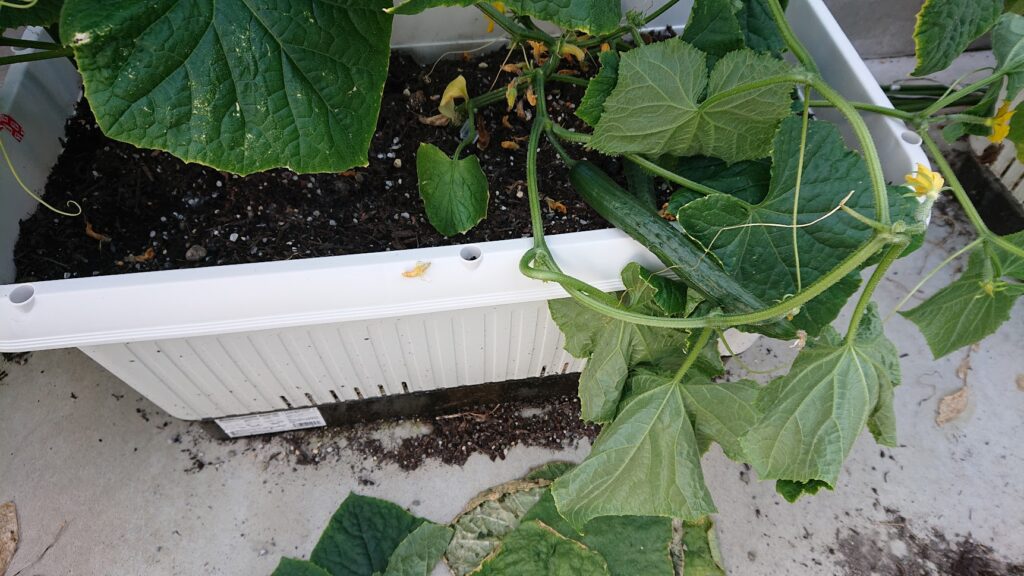
きゅうりのナムル Cucumber namul
立派なきゅうりを2本使ってナムルを作ります。
Make namul using two fine cucumbers.
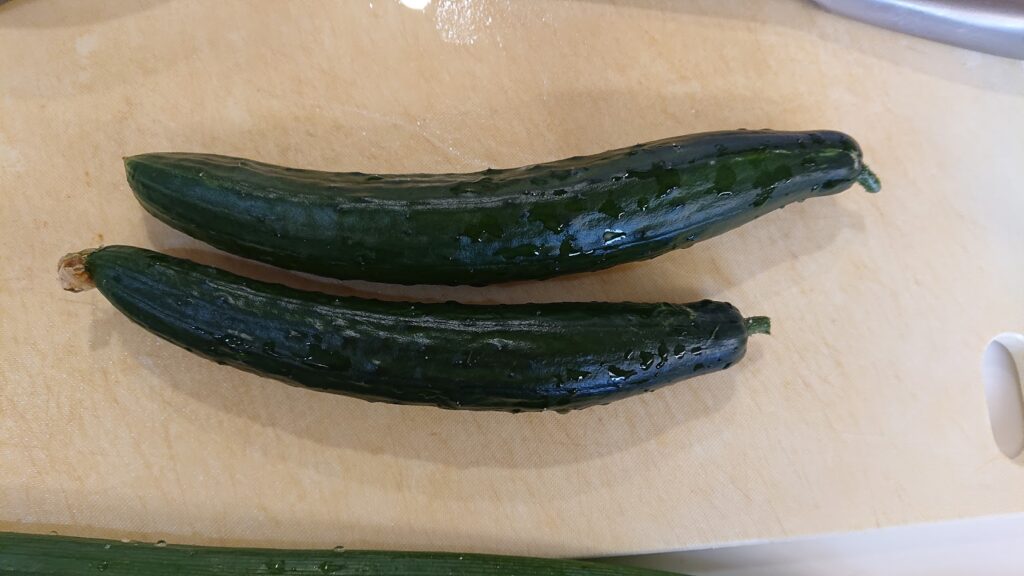
今回は下ごしらえもちゃんとしてみました。
This time I tried to prepare it properly.
まず、きゅうりを洗い、ヘタを切ります。
First, wash the cucumber and cut the stem.
切ったヘタで切断面をこすります。
Rub the cut surface with the cut stem.
こうすることで渋みを軽減できるそうです。
This seems to reduce the bitterness.
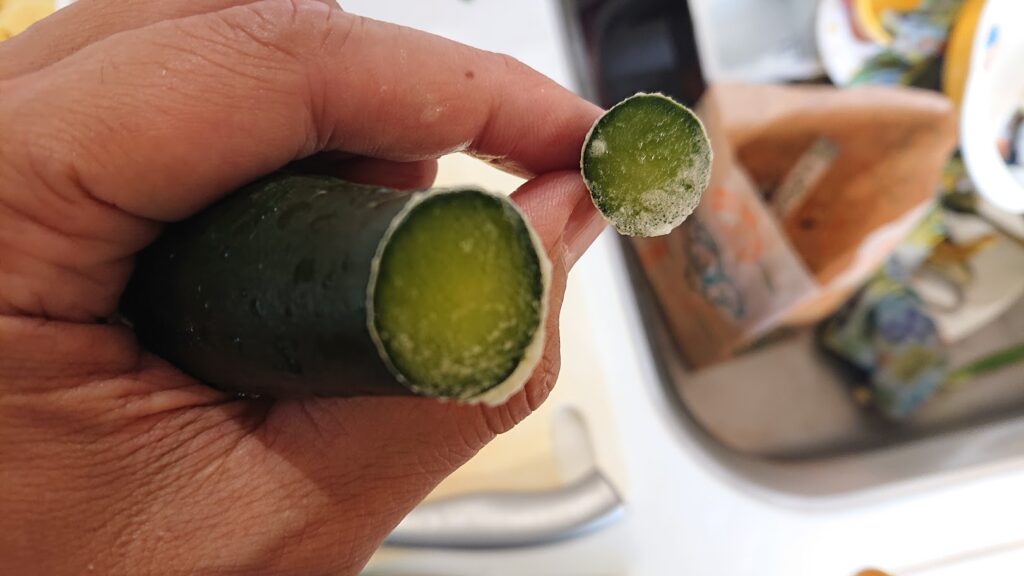
次に板摺をします。
Next, do board printing.
まな板に塩を少量まいて、転がします。
Sprinkle a little salt on a cutting board and roll it around.
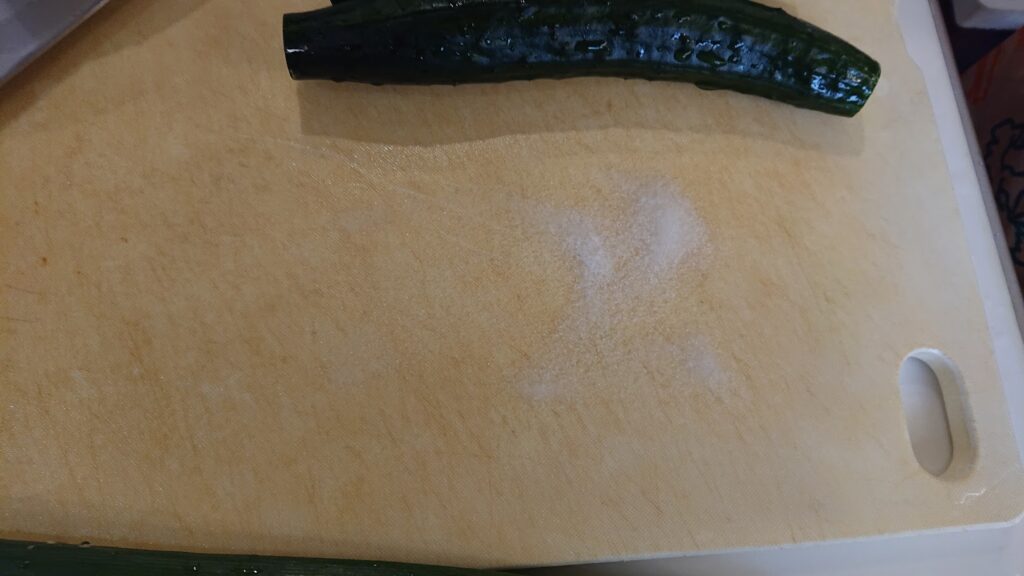
すりすりしてきゅうりのとげとげを取っていきます。
Rub it to remove the splinters from the cucumber.
食感がよくなるみたいです。
It seems to improve the texture.
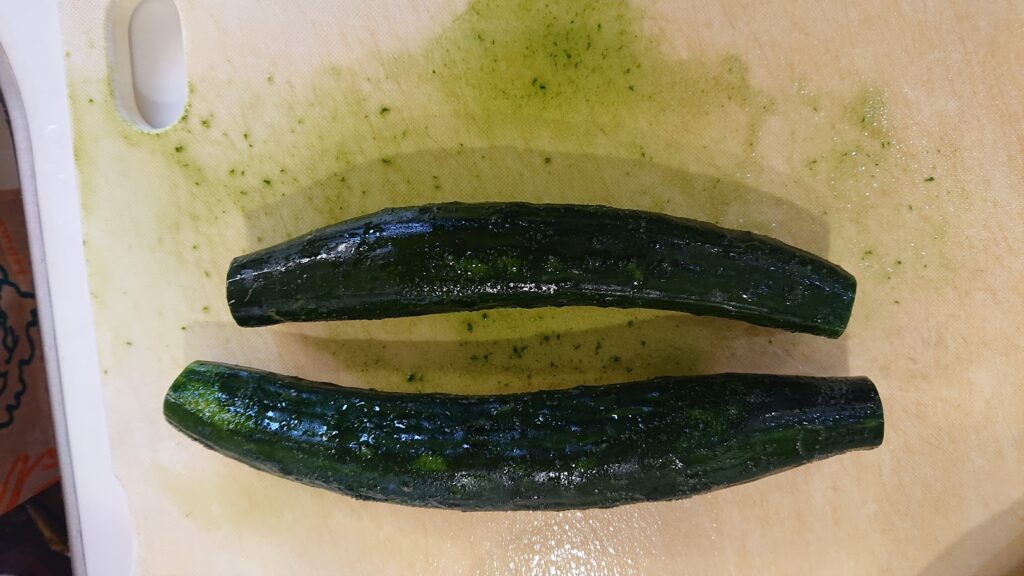
ここまでこれば後は切って調味料と混ぜるだけです。
Once you’ve done this, all you have to do is cut it up and mix it with the seasonings.
調味料は
The seasoning is
About 3 pinches of salted kelp
塩昆布 3つまみぐらい
Chinese soup base – about 1 teaspoon
中華スープの素 小さじ1ぐらい
ごま油 大さじ1ぐらい
Sesame oil – about 1 tablespoon
塩 少々
A little salt
入りごま 好きなだけ
Sesame seeds as much as you like
混ぜたら完成です。
Mix it and it’s done.

そこそこおいしいと思います。
I think it’s pretty tasty.
すり身の味噌汁 Surimi miso soup
ねぎはみそ汁に入れました。
I added green onions to the miso soup.
完全に我流の作り方なので
あまりお勧めしません。
I don’t really recommend this, as it’s completely my own way of making it.
用意するのはこちらです。
Here’s what to prepare.
すりみ
Surimi
豆腐
Tofu
ねぎ
green onion
調味料はこれです。
This is the seasoning.
昆布だし
Kelp soup stock
みそ
Miso
鍋に0.8リットルぐらい水を入れます。
Pour about 0.8 liters of water into the pot.
豆腐をいれます。
Add tofu.
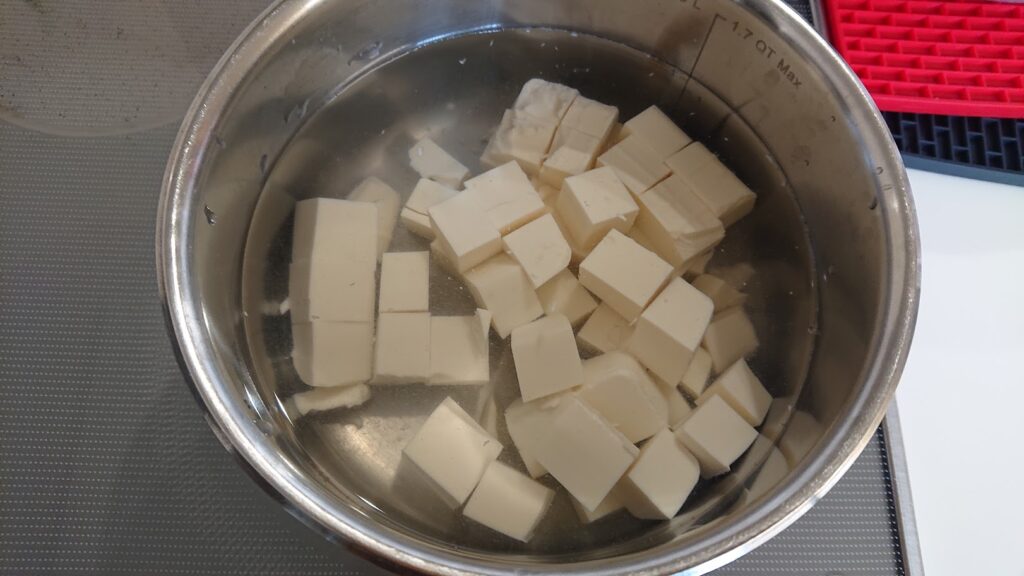
すりみがこれです。
This is surimi.
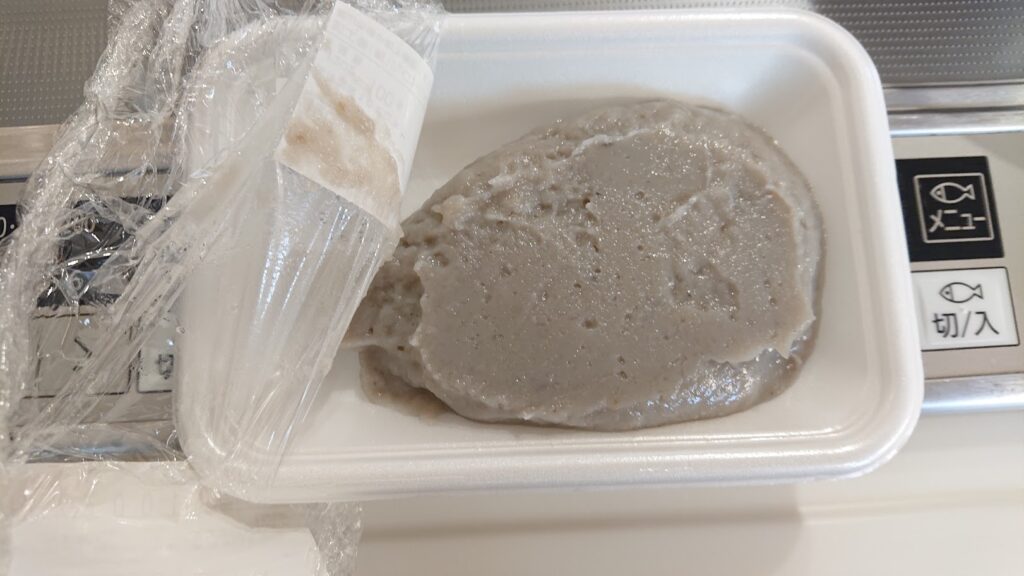
すり身を入れます。
Add the surimi.
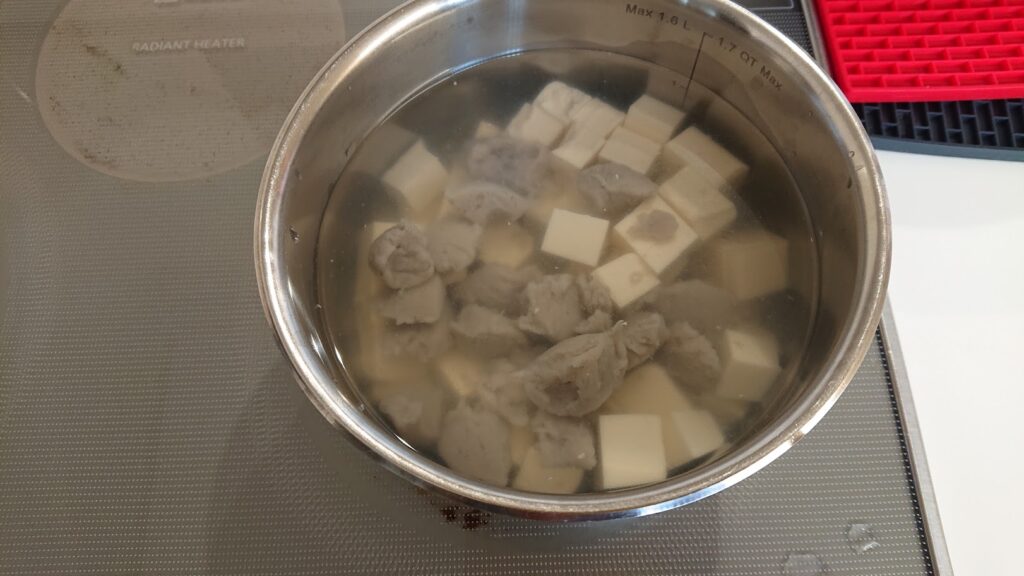
出汁を入れて
Add the stock,
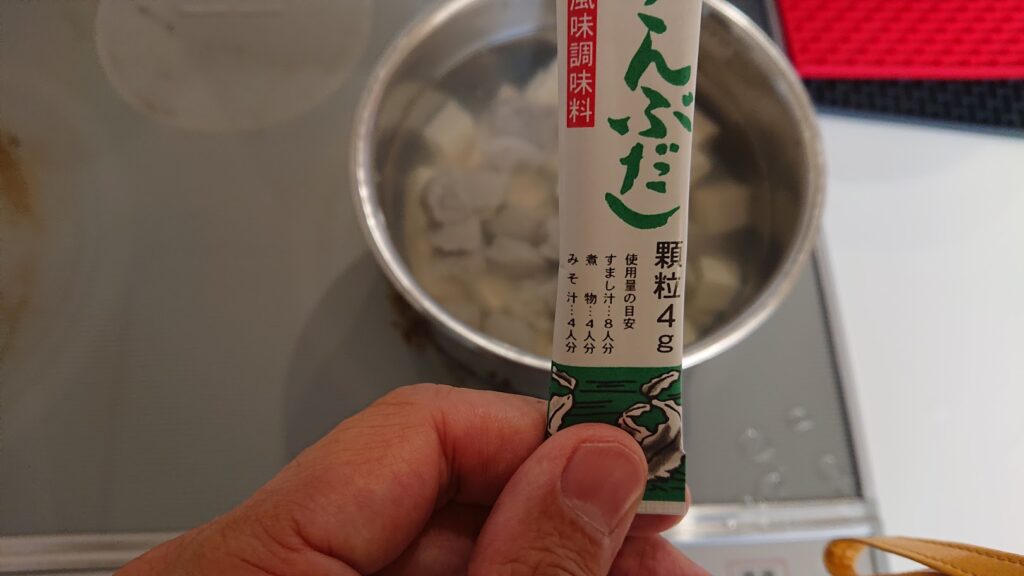
ねぎ入れて
add the green onions,
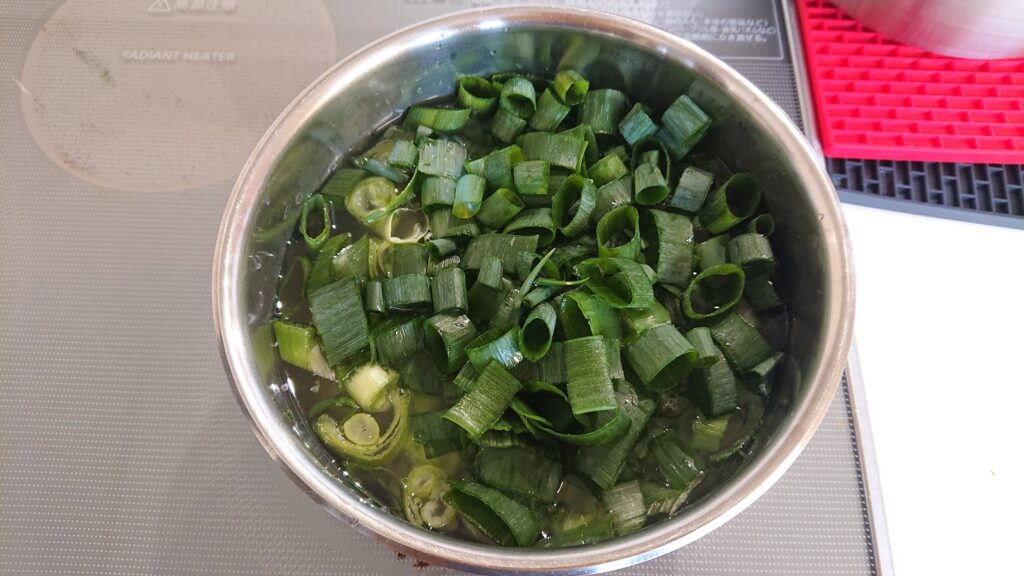
沸騰させます。
and bring to a boil.
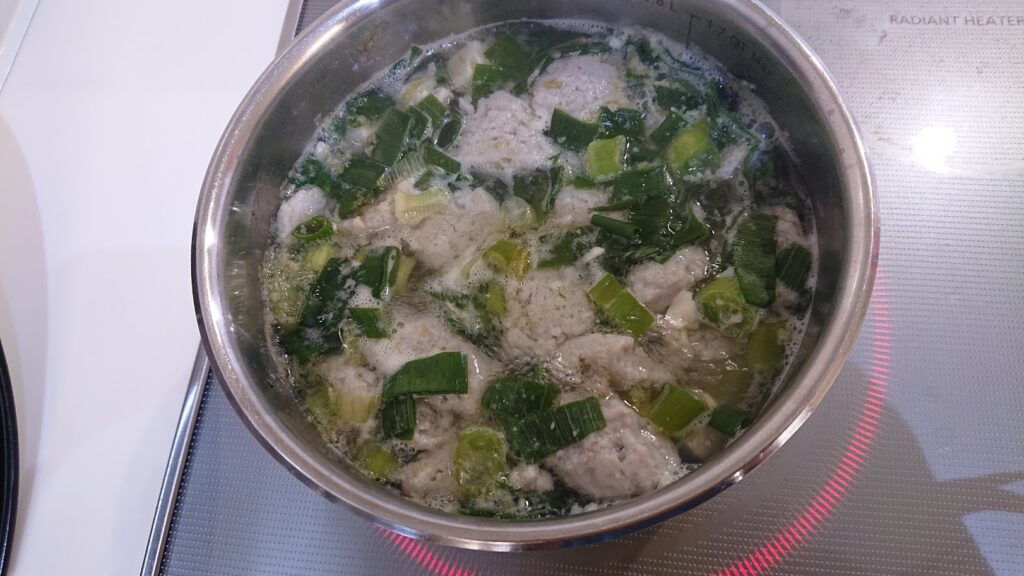
味噌を溶いて完成です。
Dissolve the miso and it’s done.
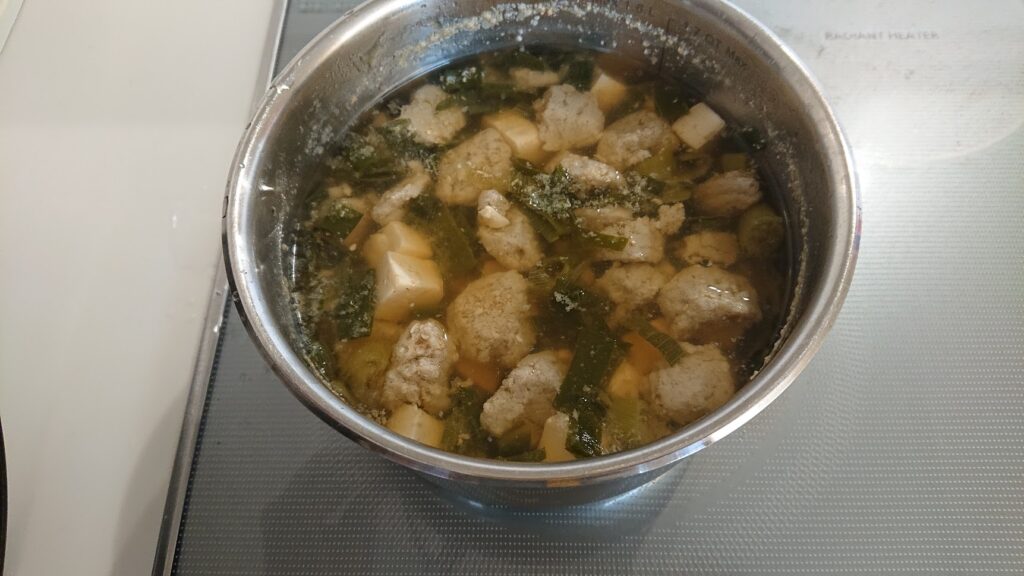
私的にはうまく作れたと思ったのですが、
妻の感想はいまいちとのことでした。
Personally, I thought it was well made, but my wife’s impressions were not so good.
だしが強すぎてみそ感が少ないそうです。
It seems that the dashi is too strong and there is not much miso flavor.
これではみそ汁ではないとのことでした。
I was told that this was not miso soup.
次回はだし少な目で味噌多めで作りたいと思います。
Next time I would like to make it with less dashi and more miso.
Memo: Surimi
Surimi is a processed food that was developed in Japan and spread all over the world.
Surimi is used as a raw material for paste products such as kamaboko.
The material is fish.
A fish called walleye is often used.
This fish called walleye pollack was caught in large quantities in the sea north of Japan.
However, the freshness deteriorates quickly, and the meat becomes crumbly when frozen.
Even if they were able to catch a large amount, they were often discarded or left to rot.
In 1960, a research organization in Hokkaido developed a technology to suppress the behavior of walleye pollock when it is frozen.
After that, surimi became able to be stored frozen for long periods of time, contributing to the stable production of processed foods such as kamaboko.
From there, it spread all over the world, and processed foods made using surimi became popular.
Sometimes hard work pays off.
I would like to applaud the efforts of research institutions in Hokkaido.
Thank you, Hokkaido. Thank you, Surimi.
Thank you for your persistence.
It’s an unyielding spirit. King slime. King now.

